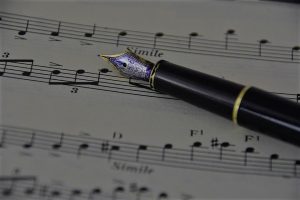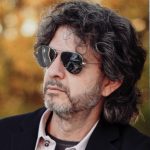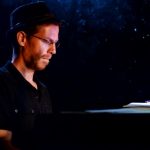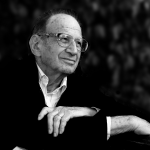Israeli Composition Contest
 Since its inception, contestants in the Rubinstein Piano Competition have been required to perform an “Israeli Piece”. Usually, the organizers of the competition approached Israeli composers proactively and commissioned works written especially for the competition. This time, the Rubinstein Competition in cooperation with the Israel Music Institute, held a composition contest.
Since its inception, contestants in the Rubinstein Piano Competition have been required to perform an “Israeli Piece”. Usually, the organizers of the competition approached Israeli composers proactively and commissioned works written especially for the competition. This time, the Rubinstein Competition in cooperation with the Israel Music Institute, held a composition contest.
The Rubinstein Competition and the Israel Music Institute “called upon” Israeli composers to compose an original piece for the Competition, which was followed by nearly 50 works that were submitted. Five senior musicians were selected as the judging panel, without them knowing of each other. The judges received the compositions without identifying details, and thus the judgment was made on the basis of determining the quality, originality and the degree of suitability of the work submitted to the Rubinstein competition.
The two works that won first places will be played at the Competition, will be published by the Israel Music Institute and their composers have won a cash prize. The two works which were ranked third and fourth, will also be published by the Israel Music Institute.
The winners whose works will be played at the Competition are Yoram Meyouhas, for his work “Toccata Caprice” and Alon Nechushtan for his work “To Walk in the Shadow of Giants”. The composers whose works have been selected for publication by the Israel Music Institute are Uri Rom, for his work “Tel Aviv Toccata”, and David Montsarsh, for his work “Points in its Chamber”.
In addition, the Rubinstein management chose to pay tribute to the notable Israeli composer Sergiu Natra and present his work “Three Street Cortèges”, as one of three Israeli works to choose from.
The members of the judging committee of the composition competition: Yosef Bardanashvili, Michal Tal, Ofra Yitzhaki Oded Zehavi and Moshe Zorman.
Yoram Meyouhas
 Yoram Meyouhas was born in Israel in 1967. He studied viola with Daniel Binyamini and conducting with Aharon Harlap. He often performs contemporary music in Israel and abroad, including works dedicated to him by Israeli composers. He was Principal Violist in various Israeli orchestras. Meyouhas recorded for radio stations both in Israel and around the world. His works have been performed in Hungary, Czech Republic, USA and Israel, among others.
Yoram Meyouhas was born in Israel in 1967. He studied viola with Daniel Binyamini and conducting with Aharon Harlap. He often performs contemporary music in Israel and abroad, including works dedicated to him by Israeli composers. He was Principal Violist in various Israeli orchestras. Meyouhas recorded for radio stations both in Israel and around the world. His works have been performed in Hungary, Czech Republic, USA and Israel, among others.
As a lecturer, he had a radio show on Kol Israel and was often interviewed for the voice of Music for his activities as composer and performer. He currently divides his time between Israel and Germany and dedicates most of his resources to composition.
Meyouhas has written, among others, four symphonies, two symphonic overtures, concertos for flute, clarinet, horn, violin, cello, and viola, as well as a Concerto Grosso for String Quartet and String Orchestra. His chamber works include “consort” for string septet. Vocal works include song cycles for voice and various ensembles and a two-act opera on the subject of the Holocaust.
Meyouhas works are published by the Israeli Music Institute (IMI), The Israel Music Center (IMC) and by Or-Tav publication.
Yoram Meyouhas is a Laureate of the 2017 Prime Minister Prize for Composers.
Alon Nechushtan
 Alon Nechushtan was born in Rishon LeZion, Israel. His Large Scale works for theatre, dance and film, have often been commissioned by renowned institutions, such as Kennedy Center and the Smithsonian Museum, both in Washington D.C.
Alon Nechushtan was born in Rishon LeZion, Israel. His Large Scale works for theatre, dance and film, have often been commissioned by renowned institutions, such as Kennedy Center and the Smithsonian Museum, both in Washington D.C.
Alon’s principal composition teachers include Zvi Avni, Mark Kopytman, Joseph Bardanashvili (Israel) and Michael Gandolfi, Lee Heyla, Lukas Foss (U.S).
He won awards and scholarships for his works, that blend elements from Klezmer modes, Sephardic & Middle Eastern Grooves and improvisation, alongside with modern and electro acoustic music. In 2015, The Philippine Philharmonic Orchestra, has performed his work “Trismegistus”. His chamber pieces have been commissioned by Barge Music, Mise-En Ensemble, Imani Wind Quintet, Israeli Contemporary String Quartet, Keats String Quartet, Fair Trade Trio String Quartet, among others.
As a pianist, Alon Has performed at the Kleztival (São Paulo), the Philippines and Beijing Jazz Festival, to name a few. He is part of Roberto Rodriguez Masada Quartet that tours worldwide playing the music of John Zorn. Alon Has collaborated with Israeli choreographers Neta Pulvermacher, Ilanit Tadmor, Dganit Shemy and Sally Anne Friedlander.
Alon released 10 Cd’s under his name on various international labels such as Tzadik, Buckyball (U.S.A), Creative Sources (Portugal), Between the Lines, Challenge (Netherlands), MGN, Enja (Germany), Future Classics (Netherland), Ayler (Sweden).
The composition’s title combines two different terms into a unified whole.
The term Toccata harks back to the Renaissance and the Baroque eras. One of its distinct features is the emphasis placed on the player’s abilities of a rapid virtuoso display of fingers on the keys while improvising. The Caprice (Capriccio) is less formalistic than the Toccata; it is played much faster and with greater flair.
I have endeavored to fuse the two musical approaches in my composition.
On the one hand, in and between phrases glide fast passages with well-defined rhythm. On the other, I seek to accord the player some liberty to characterize the various swift musical themes. Thus, I operate at several plateaus: alternating repetitive expressions between drama and tranquility; poly rhythmic composing, i.e., different rhythm patterns being played concurrently; portraying several tonal centers together (poly tonality); even minimalistic aspects – short, repetitive sound forms that are reiterated for the length of a few bars.
Throughout the composition I use major key chords, minor ones and seventh chords.
My writing is often based on conventional musical forms, including the sonata form; the arch form A-B-C-B-A; the passacaglia form; assorted medieval modi and others. For Toccata Caprice I have employed the arch form.
The composition title is loosely related to the Latin expression “standing on the shoulders of giants”- discovering truth by building on previous discoveries. However, I chose my own alternative title raising questions as to who those giants are and why are they casting shadows.
The Three Giants I allude to are the three pillars of contemporary Israeli Art Music, often considered the founding fathers of Israeli 20th century music: Paul Ben-Haim, Mordecai Seter and Oedon Partos.
I dedicated each movement to these composers, by borrowing a motif from each of these composers’ oeuvre, using it as an anchor to my own composition.
However, there is a fourth Giant, a grand master of colour – a painter overseeing the entire structure of this piece, providing the overall necessary framework (mostly purple, blue and black) – Mordecai Ardon (1896-1992). Three of his nocturnal adventures, describing Jewish life, inspired my work – night is approaching, shadows are coming to the Jewish neighborhood, referring to historic, key events in Judaism during the 20th century, that Ardon certainly witnessed.
The piece is 9 minutes long and the movements do not have to be played in the order I chose.
Sergiu Natra
Prof. Sergiu Natra (1924-2021) was born in Romania and immigrated to Israel with his wife in 1961. He served, among other, as a professor at the Academy of Music in Tel Aviv Universuty in the fields of composition, theory and form analysis.
Natra began composing at a young age and won the George Enescu Prize for Composition at the age of 21 (awarded to him by Enescu himself) as well as the National Prize at the
age of 27, which earned him international recognition.
His compositions, orchestral and chamber works are frequently performed around the world. Various works he wrote for harp are often performed in international competitions and festivals, and he is considered one of the most prolific classical composers for harp. Natra’s style has a distinctly European orientation and a clear personal stamp of originality and creativity. His writing is characterized by a melodic flow, polyphonic thought and a gradual and rich development of the motif material.
Until his death at the age of 97, he continued to create and publish for a variety of ensembles and in recent years a number of new works, including symphonies, have been performed with great success.
Natra’s creation Three Street Cortèges for concert piano (2018),
is based on an early creation that he wrote towards the end of World War II.
The events that the composer and his family experienced during and after the Holocaust, were the inspiration for creating this music.
The three movements in the work have descriptive titles that speak for themselves: festival, funeral and revolt.
The first movement uses sounds written in a dodecaphonic scale and subsequent sounds written in a chromatic scale. It is characterized by experiences and intense emotions in rapid tempo.
The second chapter is written in a chromatic scale and is characterized by drama and slow tempo.
The third chapter was written also in a chromatic scale and is characterized by experiences and turbulent emotions in rapid tempo.
The piano in the work serves as a huge reflector of sounds that blend like the shades of light and shades of darkness, in different, as well as opposite, directions. Through the use of high, low, strong, weak, repetitive, changing, accentuated, soft, consonance and dissonance, in sounds and chords, certain “mind visual visions” are created that are suitable to each of the movements.




